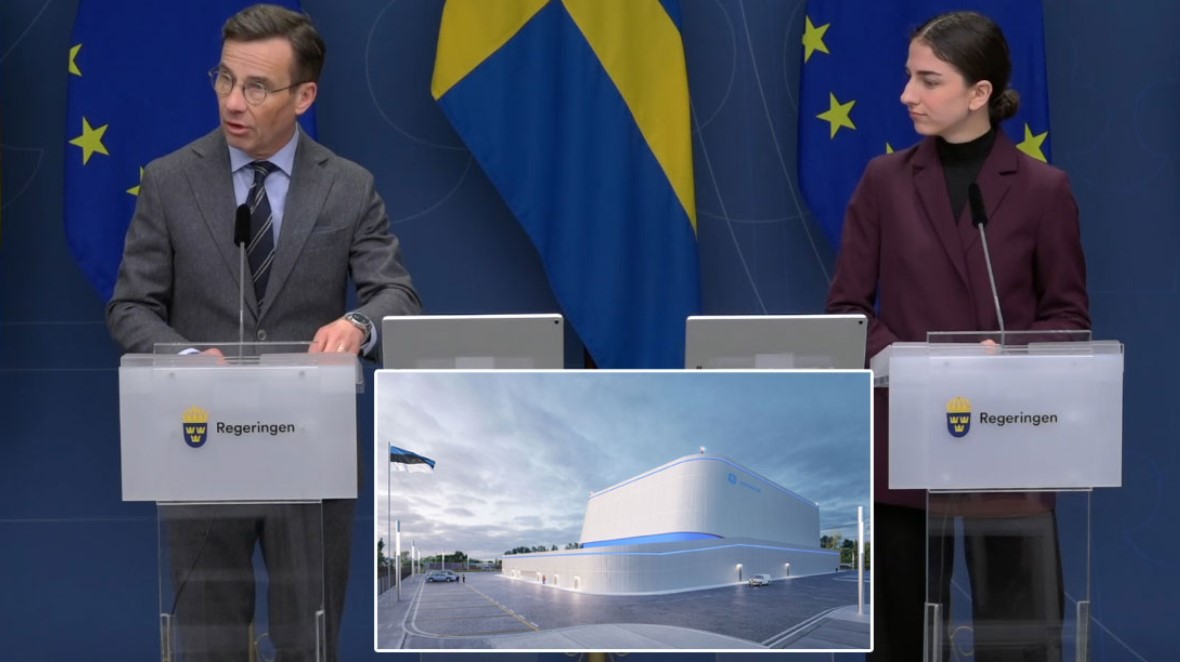 On January 11, Sweden's government opened the door for new nuclear reactors. Still image: laveringen.se Inset: Fortum and Vattenfall welcomed the government's announcement. Photo: Hitachi
On January 11, Sweden's government opened the door for new nuclear reactors. Still image: laveringen.se Inset: Fortum and Vattenfall welcomed the government's announcement. Photo: Hitachi
It’s spring for nuclear power
The tide has turned in Europe and Sweden when it comes to the nuclear power issue. On January 11, Sweden's government opened the door for new nuclear reactors to be built, more than the previous maximum number and in new locations in the country.
Published: February 14, 2023, 7:15 am
Over a hundred new nuclear reactors are under construction or in the planning stages in Europe right now and the EU has reclassified nuclear power as a “green type of energy”. Last month, Sweden’s government also took the first steps to reverse decades of nuclear-negative Swedish policy.
The current energy crisis has made it clear that nuclear power cannot be replaced in the foreseeable future by the types of energy favored by Europe’s politicians.
There is still concern about nuclear power due to the risk of radioactive emissions and the question of what to do with spent nuclear fuel – many still remember Fukushima and Chernobyl as discouraging examples. Even Sweden, which is considered to be one of the safest nuclear power countries due to high engineering know-how and non-existent corruption, has had worrying incidents. At the same time, most people also realize that only nuclear power remains as a stable source of scalable, plannable and economic and long-term environmentally friendly energy.
This is the reality that European politicians have woken up to and which also explains why more and more countries are planning to build new nuclear reactors. Right now no less than 104 new reactors are being built or planned in Europe. In Sweden, on January 11, the government announced concrete steps that will make it possible to build not only new, but also more reactors than before.
Without nuclear power, Europe’s electricity grid would have collapsed
A total of 13 of the EU’s 27 member states already have their own nuclear power plants. In total, there are 103 active reactors in the EU and 170 in Europe as a whole if you include Russia west of the Ural Mountains. According to figures from the EU’s statistical office Eurostat, nuclear power today accounts for a quarter of the total energy production within the Union.
For some countries it is considerably more than that. In Sweden, depending on the time of year, nuclear power accounts for approximately 30 to 40 percent of total energy production. In Belgium it accounts for 50.8 percent, in Slovakia 52.3 percent, Ukraine 55 percent (before Russia captured Zaporizhzhya, Europe’s largest nuclear power plant) and France 69 percent.
For France, the 56 active reactors mean that it can cover most of its own electricity needs and at the same time sell electricity to other countries like Germany, which are dependent on imports. In other words, nuclear power is already monumentally important for Europe to have access to stable and predictable base power to run our societies and industries.
The lie about ‘unprofitable’ nuclear power
Most recently, barely a year ago, Sweden’s former Socialist energy minister Khashayar Farmanbar said in an interview in SVT Aktuellt: “Show me the money! Is anyone interested in paying for higher electricity prices by investing in unprofitable nuclear power?”
The words echoed the mantra that leftists have repeated for decades, that “no one wants to invest in building new nuclear power”, as the then climate and environment minister Annika Strandhäll claimed, adding that it was “market forces” that had stopped nuclear power.
Due to subsidies and punitive taxes, there is no normal competition between the different types of energy. Political decisions have tried to make nuclear unprofitable. By introducing punitive taxes, extreme environmental requirements and administrative obstacles in the form of complicated laws, regulations and permit processes, mainly social democrats in Europe and “green parties” like the Swedish Green Party have aggressively attacked the market forces they then claim are uninterested in nuclear power operation. A typical example of this action can also be seen in Germany.
Of course, one can also argue that nuclear power is only profitable as long as there are no accidents. The Fukushima disaster has so far cost around €80 billion, according to a Japanese audit report, and then there is still an enormous amount of work to be done. But when people in Sweden and Germany talk about the profitability of nuclear power, it is not the accidents that come to mind.
Germany’s nuclear power issue mirrors the Swedish one
In Germany, nuclear power used to account for a quarter of total energy production, until 1998 when a coalition government consisting of the Social Democrats (SPD) and the Green Party took power. It was then decided that nuclear power would be phased out completely by the year 2022. Because there was a change of government, the shutdown was paused for a few years, but as soon as the red-greens came to power again in 2010, they started dismantling the system. Germany then had 17 reactors in operation. The following year, eight of them had been closed down.
After that, the decommissioning of fully functioning reactors continued at a furious pace. Outwardly, it was said that the build-up of wind power would replace the loss of production, but in practice they came to rely above all on Russian natural gas. In order to speed up the phase-out of nuclear power, they introduced, just like in Sweden, special taxes on nuclear power production and found various ways to make the operation of nuclear power unprofitable. On the contrary, wind power, solar power and other unprofitable forms of energy received extensive subsidies from the German state. It could then be argued that it was profitable for electricity producers to invest in alternative forms of energy but not in nuclear power.
Although Germany had originally intended to completely close its last remaining nuclear power plants by 2022, due to the world situation, it has been forced to enact emergency laws that enable the continued operation of the last three reactors that have not yet been closed. These are Isar 2 in the southern state of Bavaria, Emsland in northwestern Germany and Neckarwestheim 2 in the southwestern state of Baden-Württemberg. They will be kept running until at least mid-April 2023 to prevent a grid collapse in Germany.
The German example has often been used by environmental activists in the Swedish debate as an authoritative one, despite the fact that the lack of around a quarter of the planned base power it had in the past has meant that it is now forced to burn extensive amounts of lignite and buy in French and Swedish electricity – specifically from nuclear power.
Punitive taxes and subsidies
For Sweden, the most noticed of the punitive taxes introduced has been the so-called impact tax on nuclear power, also called the nuclear tax. This tax was introduced in 2000 and abolished in 2018. Together with other taxes and fees, according to the energy producer Fortum, it accounted for as much as 60 percent of the then operating cost of nuclear power in Sweden.
Vattenfall’s production manager Torbjörn Wahlborg said in 2021 in SVT that had it not been for the nuclear power tax, Vattenfall would never have made the decision to prematurely decommission the R1 and R2 reactors at Ringhals, which was done in 2019 and 2020. Despite abolishing the nuclear power tax, other taxes and fees still account for around 27 percent of the total electricity production cost for Swedish nuclear power.
As a result of the policy pursued, Sweden has shut down six commercial reactors so far. These are Barsebäck 1 and 2, Oskarshamn 1 and 2, and Ringhals 1 and 2. This resulted in a loss of energy production of a little more than 4 000 megawatts. The result is a greater need to import electricity from other countries especially during the cold winter months.
Despite the fact that so many reactors have been closed, optimization processes and upgrades of the existing nuclear power have proven to be able to compensate for the loss to some extent. On average, the remaining reactors Forsmark 1, 2 and 3, Oskarshamn 3, and Ringhals 3 and 4 have been able to increase their electricity production by around 20 percent compared to the initial electricity production when they were inaugurated. Ringhals 4, for example, has increased its production by 23 percent. The increased efficiency of the remaining reactors corresponds purely to both reactors at Barsebäck, approximately 1 200 megawatts.
Forced to accept nuclear power
The fact that nuclear power plants have been shut down on a large scale in above all Germany and Sweden, countries that have long been some of Europe’s largest nuclear power nations, together with investments in energy types such as gas and wind power, has meant a fatal weakness when it comes to energy production.
In addition, Europe has now largely switched to importing expensive liquefied natural gas (LNG) transported by ship from the US instead of cheap natural gas from Russia, and electricity prices have skyrocketed. This has unsurprisingly become a politically unsustainable situation.
Even within the environmental movement, a revaluation has begun. There, a shift has taken place from a focus on fears of radioactive emissions or a reactor failure like the one that hit Fukushima in Japan in 2011, to instead focusing on doomsday warnings about alleged climate change.
As the “climate issue” with a focus on carbon dioxide emissions now completely dominates the mass media debate, nuclear power no longer has the same “villain status” with left-wing and environmental activists. They claim that while the nuclear accident at Fukushima is deemed to have caused the premature death of 130 people from cancer, fossil power plants have already caused hundreds of thousands of deaths.
The UN Climate Panel IPCC has also stated that nuclear power and renewable energy types have low carbon dioxide emissions, as well as the advantage of long-term, stable energy and less environmental impact. Nuclear power has also been reclassified by the EU Parliament as a climate-sustainable energy alternative, which has opened the door for new production.
New reactors in several countries
In Europe, several countries are already planning to build new reactors. A total of twelve reactors are under construction, two in Great Britain, one in France, two in Slovakia, two in Ukraine, one in Belarus and finally four in the European part of Russia.
However, the number of new reactors that are in various stages of planning is considerably higher. Within the EU, there are currently far-reaching plans to build seven new reactors: one in Bulgaria, one in the Czech Republic, one in Finland, two in Hungary and two in Romania.
The fact that it is mainly in Eastern Europe that they invest in nuclear power is because they consider it important to become independent from Russian natural gas. In addition, there are plans to build two reactors in Great Britain and as many as 25 reactors in the European part of Russia.
In addition, there are 18 proposed reactor constructions within the EU for 2023, where they have not progressed as far in the permit and planning process. These concern two reactors in Bulgaria, three in the Czech Republic, two in Lithuania, two in the Netherlands, six in Poland, one in Romania, one in Slovakia and one in Slovenia. In Europe as a whole, there are in addition as many as 40 proposed reactor constructions. These concern two reactors in Belarus, 21 in the European part of Russia, seven in Ukraine and ten in Great Britain.
This means that no less than 104 new reactors are currently being built or planned in Europe.
Safety issues in Sweden
Many assume that Swedish nuclear power is safe and designed to exclude a serious nuclear accident. However, Swedish nuclear power plants have also suffered from various problems. The most serious is an incident at Forsmark’s reactor 1 on July 25, 2006, when more than twelve different safety systems were knocked out, most of them from a single fault.
During maintenance work outside the reactor facility, a short circuit occurred in a 400 kV switchgear. Voltage disturbances propagated into the nuclear power plant, protection circuits were triggered and after about 30 seconds the reactor was automatically shut down. So far everything was fine, but then the real problems began – the reactor was completely without power. The battery network that would provide uninterrupted backup power was disconnected, as a surge protector protected the batteries and not the function.
Attempts to go down to “house turbine operation” (self-supply with electricity) failed. A gas turbine, which is supposed to provide backup power, did not work due to improper maintenance. Only two diesel generators out of four were phased in automatically. According to a later investigation, it was found that these generators could have failed too.
However, the two diesel-powered generators were sufficient for important safety systems to function, but in the control room people were almost completely blind. Among other things, it was not possible to read the neutron flow (the reactor’s effect) or whether all the control rods had gone in to stop the nuclear reactions. One of the safety systems that was knocked out was the boron injection, an extreme emergency measure to stop chain reactions in the reactor.
This was the same type of problem that hit the Fukushima nuclear power plant in Japan in 2011. There was nothing really wrong with the reactors, but without power, the pumps supplying the reactor with cooling water stopped while the control room was blind.
In Forsmark, it took 22 minutes before the staff managed to manually phase in the two remaining diesel generators.
A safety analysis has subsequently been carried out which took into account the discovered deficiencies. The goal for a Swedish nuclear power plant is that the risk of a meltdown should be no more than one in 100 000 reactor years. The new analysis concluded that it was instead 1 in 52 reactor-years. The discovered errors have led to a large number of measures, also internationally, where similar deficiencies were discovered.
All rights reserved. You have permission to quote freely from the articles provided that the source (www.freewestmedia.com) is given. Photos may not be used without our consent.
Consider donating to support our work
Help us to produce more articles like this. FreeWestMedia is depending on donations from our readers to keep going. With your help, we expose the mainstream fake news agenda.
Keep your language polite. Readers from many different countries visit and contribute to Free West Media and we must therefore obey the rules in, for example, Germany. Illegal content will be deleted.
If you have been approved to post comments without preview from FWM, you are responsible for violations of any law. This means that FWM may be forced to cooperate with authorities in a possible crime investigation.
If your comments are subject to preview by FWM, please be patient. We continually review comments but depending on the time of day it can take up to several hours before your comment is reviewed.
We reserve the right to delete comments that are offensive, contain slander or foul language, or are irrelevant to the discussion.
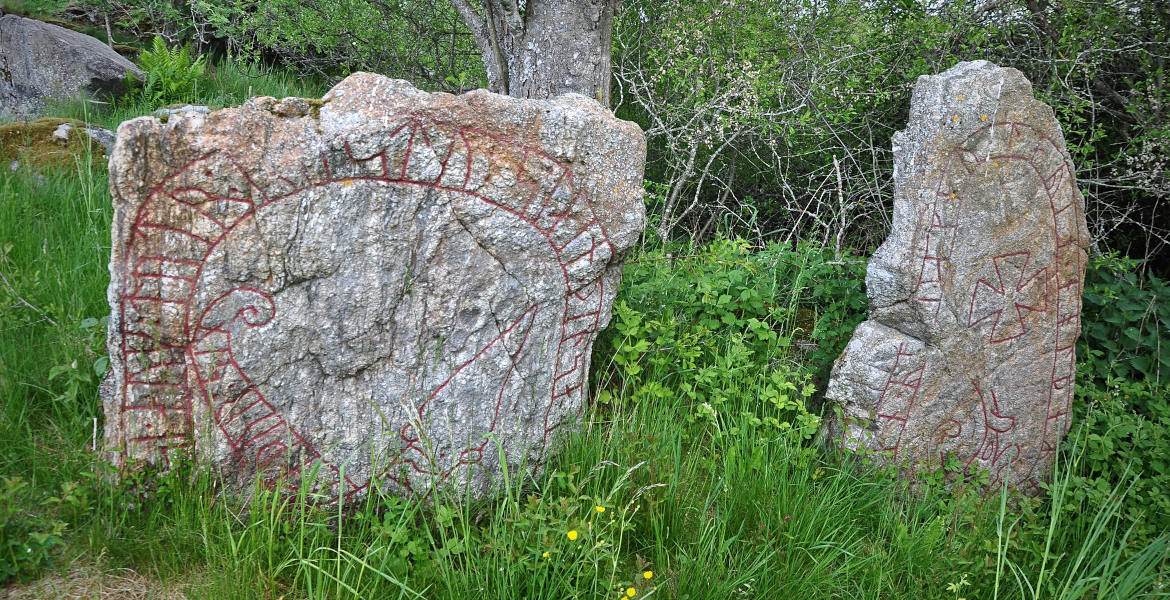
New App Helps Locate Sweden’s Historic Runestones
A new app called Swedish Runestones will help locate historical gems.
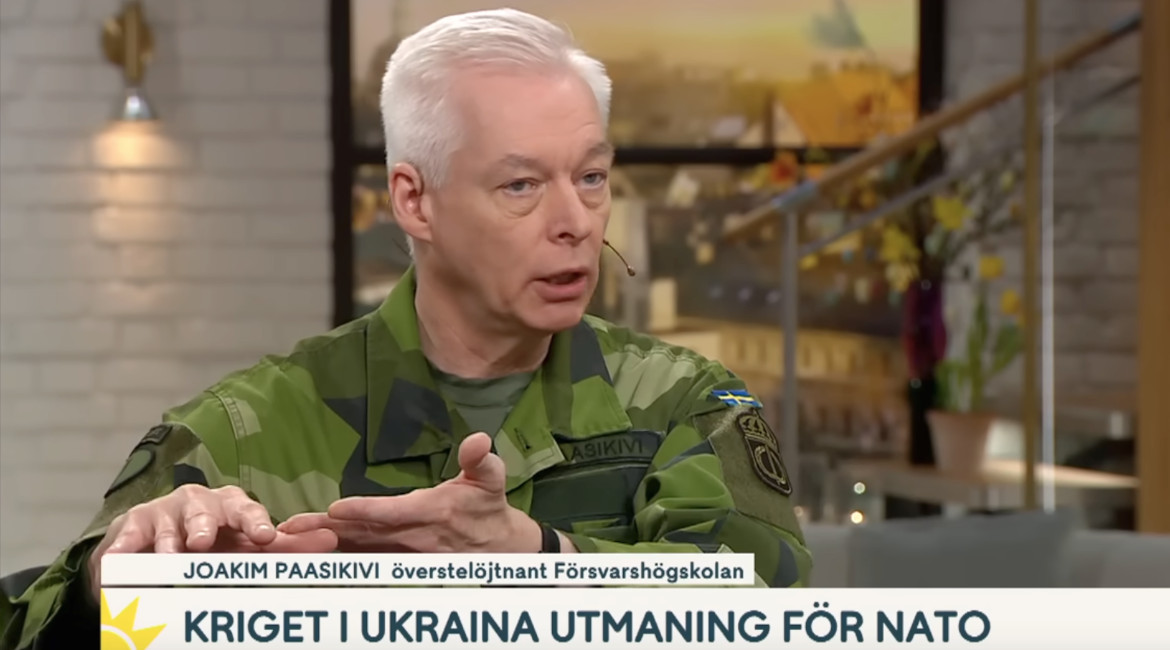
Swedish military wants to remilitarize the Åland Islands
The demilitarized autonomy has previously been known as 'the islands of peace.

NOAA Predicts Zero Sunspots for Almost the Whole 2030s
CLIMATEThe United States' government scientific organization, the National Oceanic and Atmospheric Administration (NOAA), predicts zero sunspots from 2031 to 2040. This is an extreme situation that has not occurred in as long as humanity has been counting sunspots, and it leads us into uncharted territory in terms of our solar system. However, this prediction aligns with the warnings of the world-renowned solar researcher Valentina Zharkova for many years, who indicated in 2019 various signs of this catastrophic phenomenon, including the extreme hailstorms we have seen in Europe and the world this summer. The forecast and various observations this year give cause for very significant concern. In this unique analysis, Free West Media explains why.
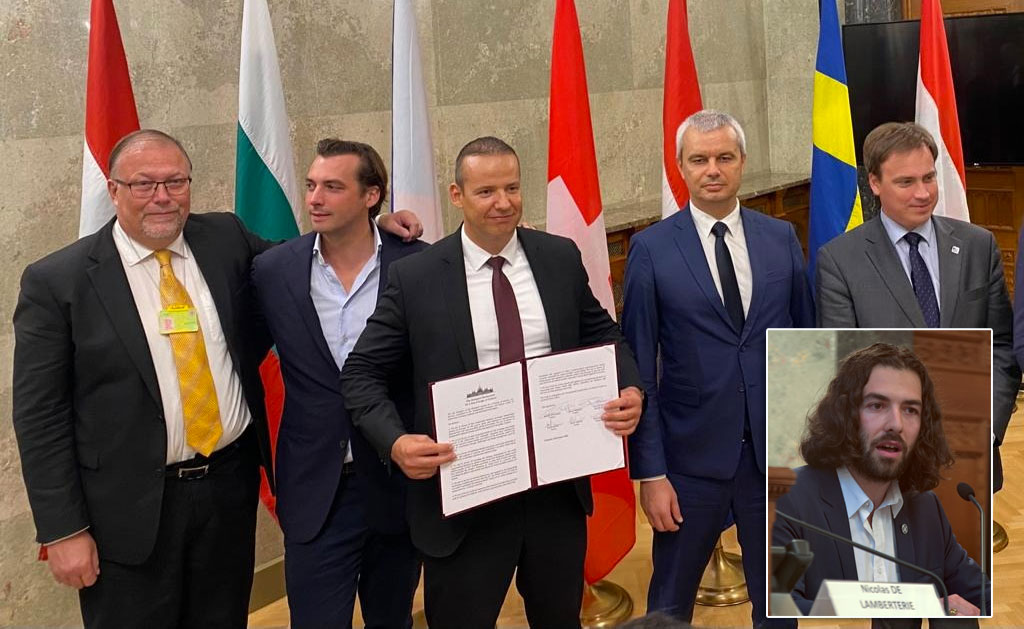
European Nationalist Parties Forge Cooperation Ahead of EU Elections
EUROPEAN ELECTIONSOn Saturday, August 26, representatives of six European nationalist parties gathered in Budapest. The meeting was initiated by the Hungarian party Mi Hazánk and took place in the national parliament. Representatives of the parties signed a joint declaration that not only reaffirms the parties' friendship but also their unity on a range of complex political issues. A surprisingly clear and radical manifesto was established. The hope is that this cooperation will lead to success in the EU elections and eventually result in the formation of a group in the European Parliament. For Swedish nationalism, this meeting marks a success as Sweden, for the first time, has a party represented in a leading nationalist cooperation in Europe. Free West Media was present at this historic event.
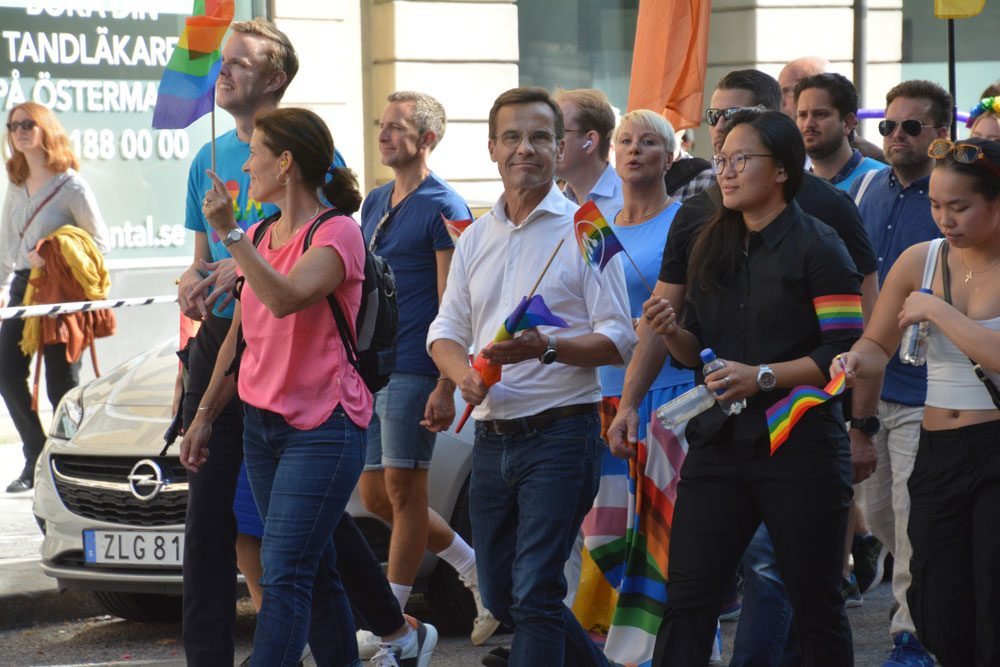
Turkey Believes Sweden Hasn’t Done Enough
Sweden will have to wait a bit longer for NATO membership, according to Turkey's Justice Minister Jilmaz Tunc. First, Sweden must extradite the "terrorists" Turkey wants and stop the desecration of the Quran.
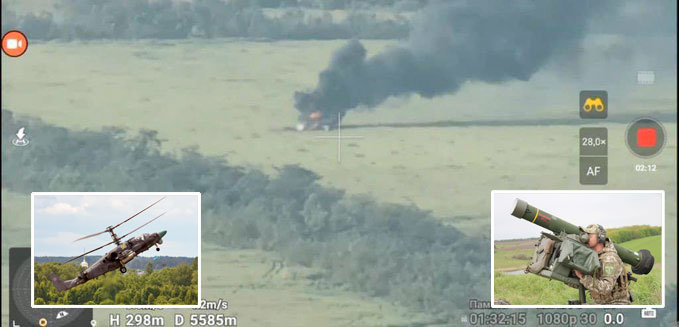
Swedish Weapon Takes Down Russia’s Best Attack Helicopter
The Russian attack helicopter Ka-52 is considered one of the world's best and has struck fear in Ukraine, where it has hunted down tanks and other armored vehicles, often beyond the range of many light anti-aircraft systems. However, it has met its match in the Swedish air defense missile system RBS 70, which has quickly led to significant losses for the Russian helicopter forces.
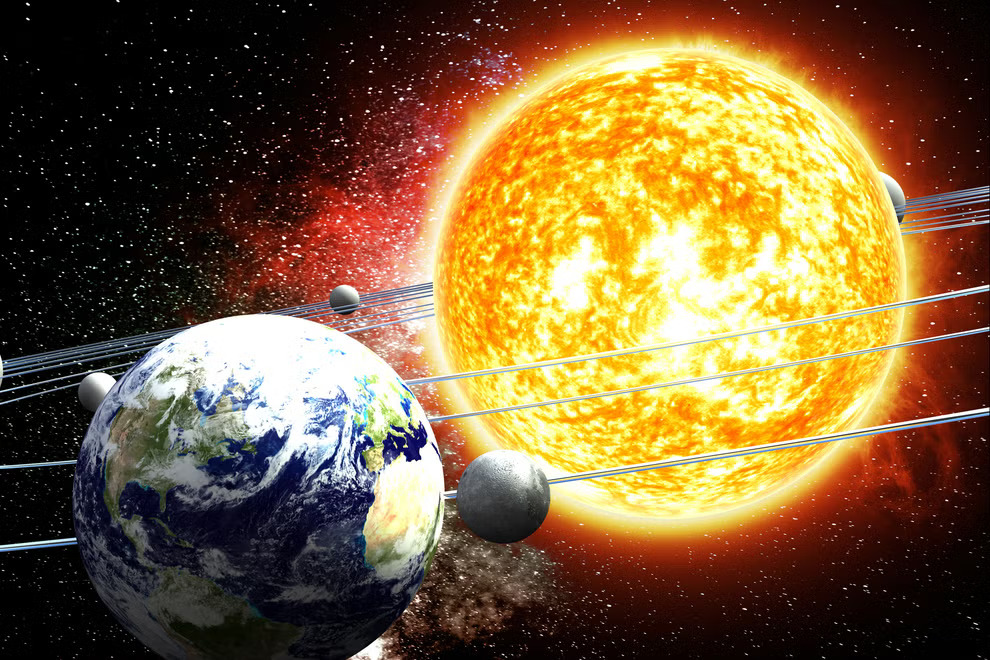
The Sun Drives Earth’s Climate, Not Carbon Dioxide
Top Researchers Push Back Against Climate Lies."The correlation is as clear as day," explained the Israeli astrophysicist Nir Shaviv, who was hailed by the establishment, before his interview with Forbes was hastily deleted. What he says contradicts the climate narrative, which points to humans as responsible for Earth's climate. Shaviv firmly asserts that it is the sun that controls the climate, something that can be scientifically proven in many ways. Contrary to the popular belief, the sun's influence on Earth has, in recent years, caused unusually cold and rainy weather, a trend that solar researchers warn will worsen significantly in the coming decades. The sun has exhibited an unusually low activity since 2016, during Solar Cycle 24, which was the weakest in a century.
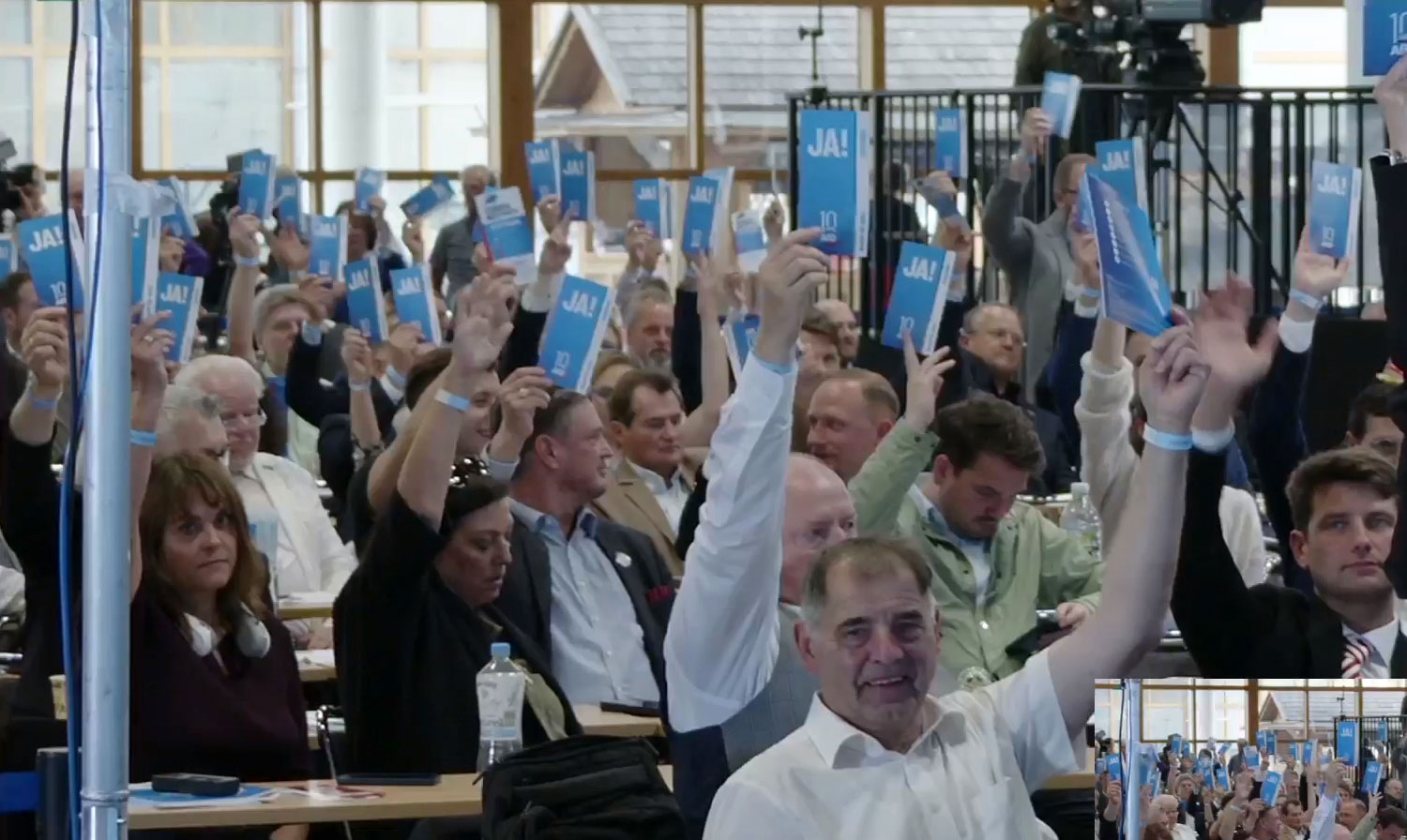
Strong Confidence in German AfD
Alternative for Germany (AfD) held a party conference on July 29-30 to select candidates for the upcoming EU election next year. EU Parliament member Maximilian Krah, belonging to the party's more radical, ethnonationalist faction, was appointed as the top candidate. The party's two spokespersons delivered powerful speeches criticizing the EU's failed migration policy and trade sanctions that isolate Europe and Germany from the rest of the world. They argued that it's time for the EU to return a significant portion of its power to national parliaments. However, they have dropped the demand for Germany to exit the EU.
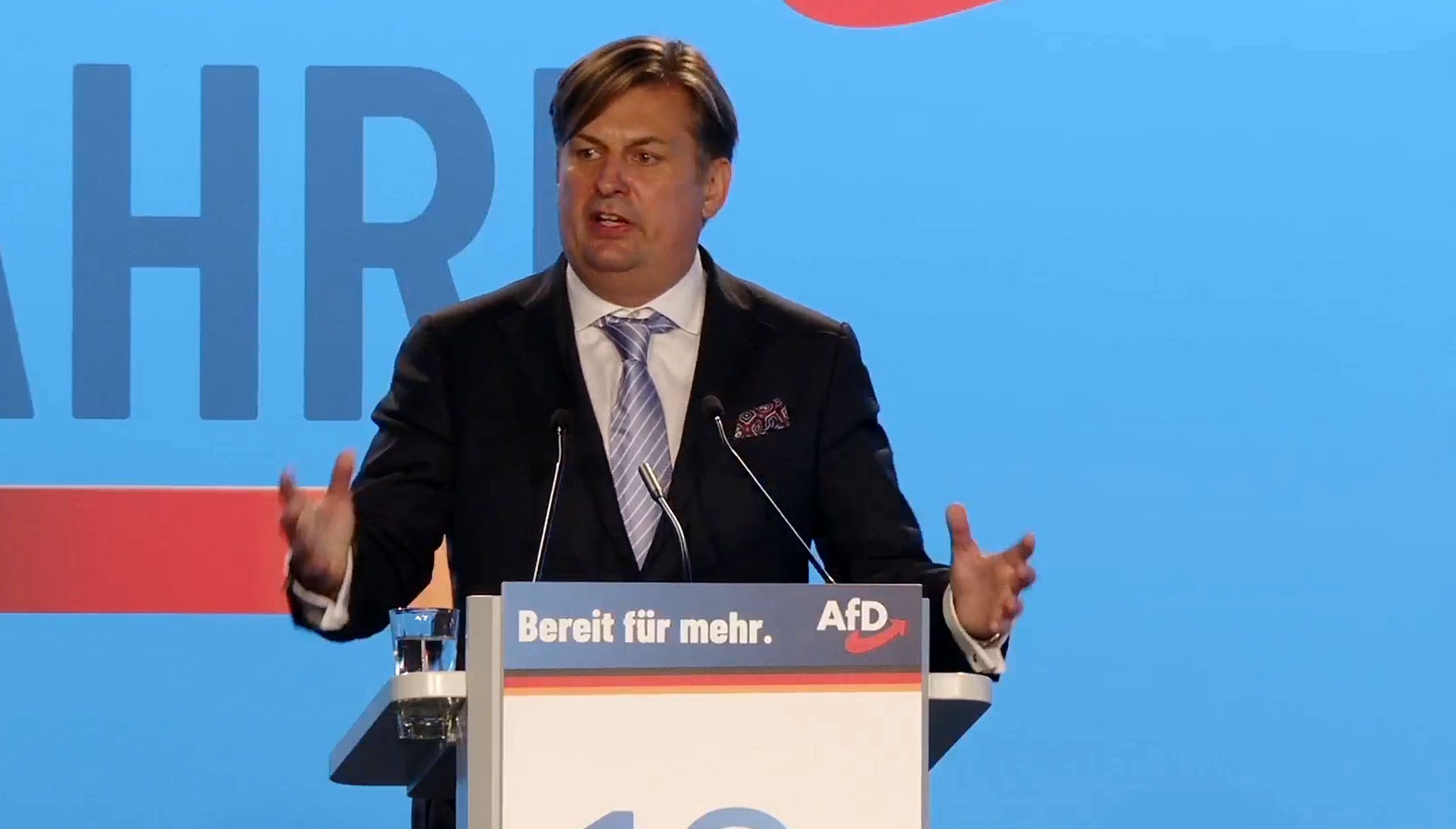
The Establishment Wants to Ban Germany’s Second Largest Party – for the Sake of Democracy
The rising popularity of AfD has raised strong concerns within the establishment. Despite lies and demonization in the media and isolation from the overall political establishment, the party continues to grow. Certain representatives of the party are accused of becoming increasingly "extreme," and in an unusual move, the influential weekly newspaper Der Spiegel demanded that AfD be "banned."

Dutch FvD break through the media blockade
What is happening in the Netherlands? It is often difficult to follow events in other countries, especially when distorted by system media. We give Forum for Democracy (FvD) the opportunity to speak out on the political situation in the Netherlands and the staunch resistance they face in trying to save the country.


No comments.
By submitting a comment you grant Free West Media a perpetual license to reproduce your words and name/web site in attribution. Inappropriate and irrelevant comments will be removed at an admin’s discretion. Your email is used for verification purposes only, it will never be shared.